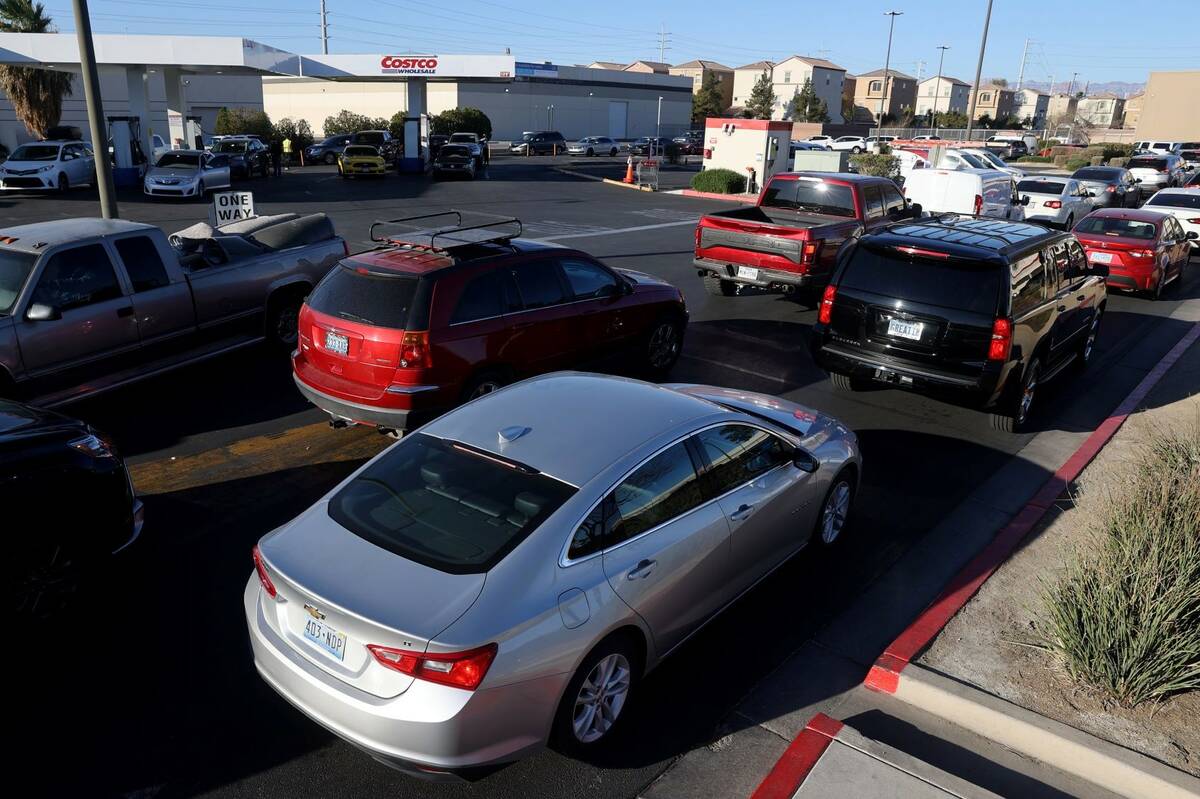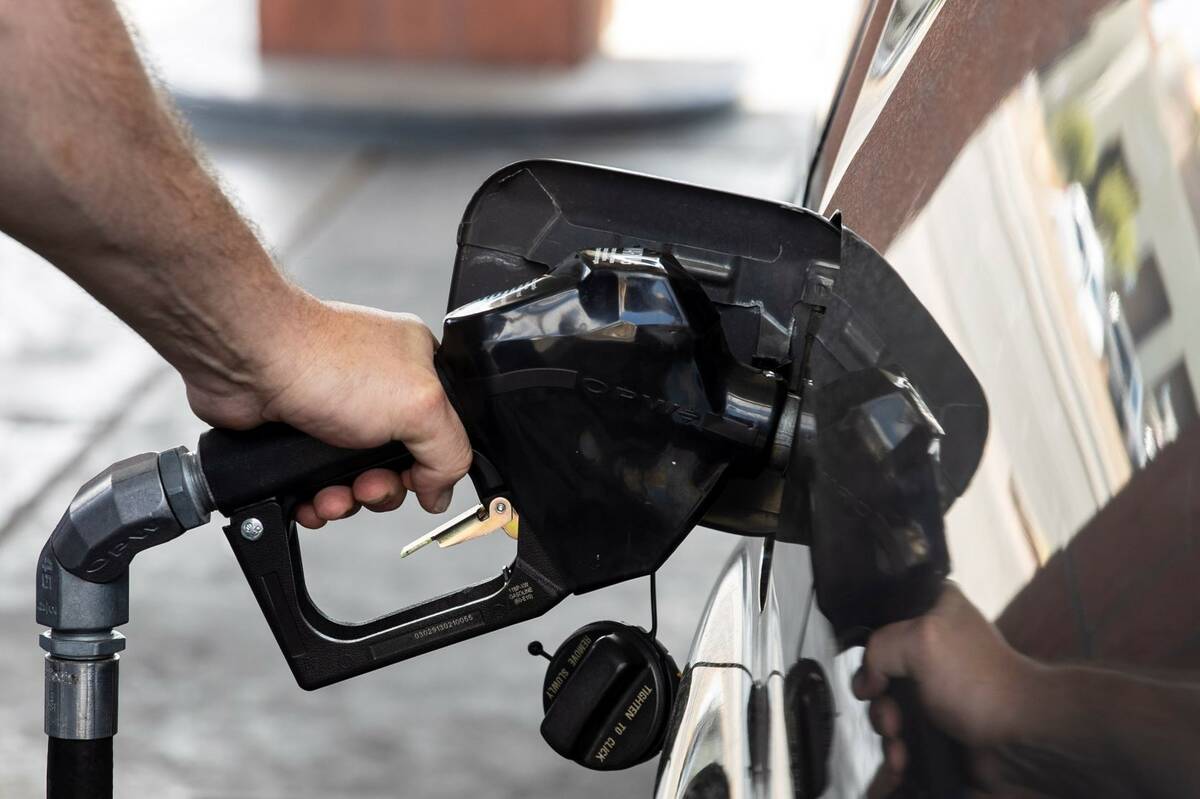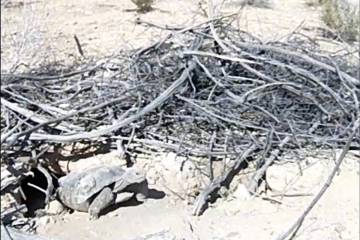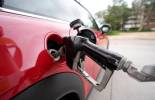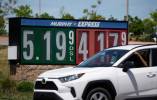Las Vegas gas prices near $5, but 2022 market differs from 2008
Las Vegas has recorded historic gas prices each of the past nine days with prices approaching $5 per gallon Saturday.
In the past month, prices for regular unleaded gasoline have jumped $1.06 per gallon and have surpassed the previous all-time high that stood since 2008. The record was topped early this week and then again in each of the following eight days, reaching $4.94 as of Saturday, according to AAA.
Nevada as a whole is at $4.93 a gallon, also an all-time high and the second most costly gas in the U.S., tied with Hawaii and only behind California’s $5.73 per gallon.
In 2008, the spike in gas prices was tied to financial instability caused by the Great Recession. Nationally, gas was averaging around $4.11 a gallon on July 16, 2008, but then dropped to $1.63 on Jan. 2, 2009.
Nevada hit its then-record high of $4.27 per gallon on June 23, 2008. By Dec. 17, 2008, the price had fallen to $1.74 a gallon, according to AAA data. That price remains the lowest the city has seen since.
A notable aspect to the 2008 run-up in gas prices is that it took three months — from March 14 to June 23 — for the price of gasoline in Las Vegas to increase by $1 per gallon. This time around, it took one month for the price in Las Vegas to jump nearly $1, going from $3.89 a gallon on Feb. 11 to $4.88 on March 10.
In 2008, the price of crude oil rose to about $147 per barrel, an all-time high, Tom Kloza, chief global analyst for the Oil Price Information Service, said. This week, U.S. benchmark oil briefly topped $130 a barrel before falling back, but it’s up more than 40 percent for 2022 and remains above $100 a barrel.
A repeat of 2008?
Whether this year will mimic 2008 with an equally rapid decline in prices is unknown as analysts are mixed on how long the high gas prices will continue.
“I see this being the first half of 2022, and then I think we’ll see prices for crude and gasoline come down in the second half of the year,” Kloza said. “I have to warn you, that is not a consensus view. The consensus view among Goldman Sachs, the JP Morgan and Barclays banks … their view is that this is just a prequel and that we’re going to see $150-$180 barrel crude.”
If crude does hit those prices this year, Las Vegas’ average gas prices could go as high as $6 per gallon with the national average between $5 and $6, Kloza said.
“I don’t think that is going to happen,” Kloza said. “I think we’re going to be seeing crude oil coming on stream into Texas, New Mexico and North Dakota.”
The national average is at $4.32 as of Saturday, which is 1 cent off the all-time high of $4.33 reached Friday.
After averaging $2.69 a gallon in 2019, U.S. gasoline prices collapsed in early 2020 as COVID-19 forced offices and businesses to close. By late April 2020, a gallon sold for under $1.90. Prices have mostly risen since then, as demand for energy rebounded, global production failed to keep pace, and inventories shrank.
While gas prices were already on the rise this year, Samantha Gross, a fellow and director of the Energy Security and Climate Initiative at the Democratic-leaning Brookings Institution, said they are up even more amid questions about international supply because of the Russia-Ukraine war.
“You drive down (the road) and there’s the price and a great big sign right next to you. So we’re always really aware of what gasoline costs. And it’s often a big political issue for whoever’s in charge in the presidency and Congress,” Gross said. “But, the truth of the matter is, is that oil prices are set on a global market based on global conditions. And there’s very, very little that Congress or the president can actually do about them.”
President Joe Biden this week announced a ban on Russian fossil fuel imports. The announcement set off a barrage of renewed Republican attacks on his domestic energy policies, while Democrats rushed to point the finger at Russia for driving up gas prices.
Kloza said, “It’s like the Crips and the Bloods, both sides (Democrats and Republicans) like to demonize one another.”
Public stuck in the middle
Caught in the middle is much of the American public, torn between wanting to support Ukraine and pocketbooks ready to be further squeezed. A Quinnipiac University poll released Monday — before Biden’s Russian import announcement — found that as many as 7 in 10 Americans suggested they would support a “ban on Russian oil,” even if it meant higher gas prices.
Kloza said the U.S. isn’t dependent on Russian oil but the rest of the world, mainly Europe, is. If the global market is impacted, that trickle-down effect is felt in America.
Gross said the Biden administration could further tap into the U.S. Strategic Petroleum Reserve, as it did to try and calm rising gas prices in November. The White House announced Tuesday that it had committed to releasing 90 million-plus barrels from the reserve this fiscal year.
“In the short term that’s the way to help keep prices down,” Gross said. “But in the long term, if we continue to see the war effort from President Putin, it’s a difficult situation.”
Earlier this year Kloza expected prices to be high this spring and summer, but not set records. Russia’s invasion of Ukraine wasn’t on his radar, however.
“I would be lying if I told you that I thought Vladimir Putin was going to invade Ukraine and there was going to be this rush to buy crude oil,” Kloza said. “It was always going to be an expensive summer and spring. Now the question is, is it going to be an epic spring and summer?”
Many banks and financial analysts are trying to calm people’s worries by asserting that the 2008 prices were tougher on people’s wallets when inflation is taken into account. With inflation factored in, the $4.27 high price seen in 2008 would be around $5.29 per gallon, Kloza said.
But Las Vegas could reach the $5.29 mark this year, Kloza said, considering its dependence on neighboring states — mainly California — for oil, the expected annual surge in travel as summer approaches and the continuing conflict in Ukraine.
Kloza also recognizes that most Americans are not buying the inflation argument; they just see the record prices and the dollars adding up as they fill their gas tanks.
“People don’t look at it and say ‘Oh, I’m only spending 3 percent of my disposable income and I was spending 5 percent back in 2008,’ ” Kloza said.
Patrick De Haan, gas analyst with Gasbuddy, said data indicates that a decline in gas prices could occur by the start of next week.
“Average #gasprices should start slowing noticeably over the next 2-4 days — they may stabilize, and some areas may see small drops,” De Hann tweeted Friday. “But the situation remains fluid, so it could change quickly. But good news.”
Contact Mick Akers at makers@reviewjournal.com or 702-387-2920. Follow @mickakers on Twitter. Review-Journal staff writer Michael Scott Davidson and CQ-Roll Call contributed to this story.



